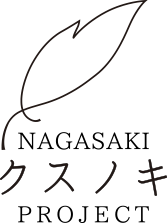


There are a number of Chinese-style temples in Nagasaki (locally known as "todera"), among which Kofukuji Temple, Fukusaiji Temple and Sofukuji Temple are collectively referred to as the sanpukuji "three temples of good fortune." These are historic temples built by the Chinese living in Nagasaki during the Edo era, who were known as kakyo. Originally the temples were not affiliated to any particular Buddhist sect, but eventually they became temples of the Obaku sect spread by the Chinese monk Ingen Ryuki, from whose name the word for the common bean (ingen mame) is derived
The buildings of Kofukuji Temple and Sofukuji Temple still stand today preserved as they originally were, and have both been designated as National Treasures and Important Cultural Properties.
The main temple and other buildings at Fukusaiji Temple were designated as National Treasures prior to the war, but were destroyed by fire upon the dropping of the atomic bomb. Although situated 2.4km from the hypocenter, it is thought that because the site straddles a northern slope it was the spread of fires in the aftermath of the bombing that destroyed the temple rather than direct heat ray damage. The temple lies 2.4km south-southeast of the hypocenter, and on the site of the former main temple there is now a statue of Kannon, the Bodhisattva of compassion, standing on the shell of a turtle-shaped mausoleum, the whole of which reaches a height of 34 meters. This huge Kannon statue was built to pray for the repose of the victims of the atomic bombing and the war dead, and is the landmark of the locality.
There are very few relics of the time that can relate the story of Fukusaiji Temple, but this fern palm continues to stand today in the same place where it endured the atomic bombing.